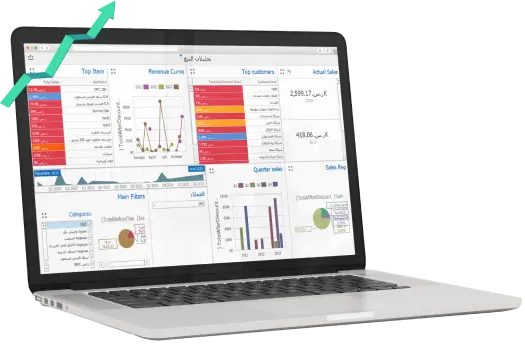Retained Earnings
Retained earnings is a component of shareholders equity, which is through which most transactions in the statement of changes in equity, for example, the net profit for the last year (net profit after tax) from which the reserve requirement percentage and other reserves are allotted, determined by the company, the remaining amount is transferred to the retained earnings account, and the accounting treatment is as follows:
| Account | Debit | Credit |
| Profit for the Year | XXX | |
| Reserve Requirement | XXX | |
| General Reserve | XXX | |
| Retained Earnings | XXX |
It is a cumulative amount of earnings in the sense that it increases as a result of the amount transferred from the profit for the year and decreases by dividend when the company decides to pay the dividend to owners or shareholders are paid from the retained earnings account and also when there are prior period adjustments, they are through the retained earnings account either increase or decrease
For example, the retained earnings as at 1 January were 800,000 pounds, and at the end of the fiscal period, 1,200,000 the net income was transferred to the balance of retained earnings, and the balance of retained earnings at the end of the period became 2 million, and after the financial statements of the company were issued, we discovered that there were mistakes that increased the profit by 100,000 EGP as a result of mistake calculating in depreciation of assets at a value less than the depreciation value and therefore the reduction is from the retained earnings account
| Account | Debit | Credit |
| Retained Earnings | 100,000 | |
| Accumulated Depreciation | 100,000 |
After the issuance of the financial statements, a mistake was discovered that it appeared inventory at the end of the fiscal year less than its value of 75,000, resulting in a decrease in net profit of the same value, adjusting journal entry is therefore being created on the retained earnings account, and the retained earnings are increased, and the journal entry is as follows
| Account | Debit | Credit |
| Ending Inventory | 75,000 | |
| Retained Earnings | 75,000 |
The ending balance of Retained Earnings is equal to:
Beginning Period Retained Earnings + Net Income/Loss during the period – Dividends − Prior Period Adjustments (expenses)/ + Prior Period Adjustments (income)
Reasons for Companies have Retained Earnings:
- The management's desire for future growth, investment operations, and asset purchases.
- The management's desire to set a safety limit to face losses and volatility unexpected.
- There are restrictive terms of bond indenture or loans that require the firm to held a portion of the profit to protect bondholders or lenders.
- The company does not have the liquidity to pay dividends to shareholders.
- In some countries, the law requires the firm to hold a portion of the profits in a statutory reserve, reserve requirement, or other reserves.
Determinants of Dividend Policy
Availability of liquidity in the company: It is possible that the company will achieve sufficient profits to declare the dividends, but the company must have liquidity at specific times to dividends.
Legal Formalities: There are laws in some countries and requirements for non-dividends to shareholders in the case of increasing liabilities to the company; this is to protect creditors and lenders.
The growth rate and development of the company: In the early days of companies it is difficult to get an external source of financing and the extent of the risk related to it. Therefore, the best is the company’s reliance on retained earnings as a source of financing and not high dividend payments in the early periods. Also, the size of the companies is considered one of the most important factors affecting because the smaller it is. The size of the company, so it would be difficult for it to borrow from banks or through the capital markets because it is not known. Consequently, the small companies allot profits and using them as a source of financing.
Shareholders' preferences: There are some shareholders who prefer to get a return from the company at the present time, which forces the companies to search for other financing sources, including the offering and issuance of new shares, and therefore it is possible that the current shareholders will lose part of their control over the company as a result of the existence of new shareholders. Others, shareholders prefer to get a low percentage of profits while remaining in complete control of the company.
Thus, alternatives for retained earnings:
Alternative 1: Dividends to the shareholders each according to their share capital.
Alternative 2: Accumulated retained earnings.
Alternative 3: Distribute a portion of the profits and retain the other portion.
Advantages & Disadvantages of Retained Earnings as a Source of Finance
Retained earnings are as a source of the internal financing of the company and therefore its existence within a company, makes it have a cost is the same as the opportunity cost
- I.e. expected returns in case of investment these profits are in other areas of investment in the sense that it is the retention of profits by not distributing to shareholders means that the company has decided to prevent the opportunity to invest these funds by shareholders in other areas outside the company, the retained earnings of a corporation must therefore be achieved a return equals the required rate of return by the common shareholders within the company, meaning that the cost of retained earnings equals the required rate of return
Firms prefer to rely on retained earnings as a source of finance, for many reasons including
Ease of getting retained earnings as they are internal funding sources and does not require any external approvals or other expenses and use of retained earnings does not affect the firm financial structure as in common shares, the company does not incur any fixed interest, and then there is no effect on the profit figure as such is the case with loans and bonds and does not include any additional cost to the company such as cost of issuing, marketing and selling new shares and it does not result in any additional rights to the company including equity and debt instrument and also does not result any warranty or asset mortgage of the company
The disadvantages of retained earnings as a source of finance are not an option for startups because, at the start of the activity, there is no profit or even weak profits, and also results in the retained earnings and using as a source of finance, the company, in this case, the company will compensate the shareholders through issuing bonus shares for distribution to the shareholders and does not result in the use of retained earnings as a source of finance achieving any tax savings for the company
Cost of Retained Earning
Cost of Retained Earnings = Cost of Equity
Retained earnings and distributing them are two opposing objectives
Despite the advantages of retained earnings that drive the company's management for using them as a source of finance, is not being retained earnings increases because the funding target is against the dividend to shareholders target and the company does not dividend to shareholders or dividend payout ratio decreases have a negative message to shareholders and investors about the current and future business performance and therefore there are two opposing goals, which requires a deliberate company policy for dividend because they are constrained by several factors, also, the legislation and laws of each country, the financial position of the company and the business results, growth, and expansion of the company
Cost of Retained Earnings = (expected dividend per share / current selling price or net proceed) + growth rate
Example:
If a company dividend is (20) pounds, the nominal value of the share is (160) pounds, the growth rate is (5%), and the sales expenses is (3%), what is required:
Is to calculate the Cost of Retained Earnings
Solution,
Cost of Retained Earnings = (20/ (160 – (160 * 3%))) + 5% = 17.88%
If there are taxes, the Cost of Retained Earnings is multiplied by (1 – tax rate), if the tax rate (40%), the Cost of Retained Earnings is equal to:
Cost of Retained Earnings = 17.88 (1 – 40%) = 10.72%
Preparing a Separate Statement of Changes in Equity
The statement of changes in equity is one of the important statements that are prepared at the end of the fiscal period, which explains the changes in a company's share capital during the previous year and the current fiscal period, the line items differ from one company to another according to the size of the company and the nature of its activity, the accountant when preparing this statement, must explain the changes of transactions that are made to these line items, especially on retained earnings, on which most of the transactions are made from dividends, adjustments, or even increasing capital through dividends and with regard to reserves, when the company decides to transfer amounts to reserves, this is done by net profit for the period and the accountant must be aware of some basic line items, which are
1- The capital that is appeared in the statement is the paid-in capital and the paid-in capital can be equal to the issued capital, when there is a capital increase, this must be explained in the statement so that the change in the capital between the two periods and in the presentation it is explained how the increase is, whether to offer shares for subscription or issuance of bonus shares as a kind of dividend.
2- The net profit for the last year is distributed to reserves and the rest is transferred to retained earnings. When the company has reached the maximum of reserves, the net profit is transferred to the retained earnings.
3- When the company decides to dividends, it is done by deducting the value of the dividend from retained earnings.
4- Adjustments to the company in terms of revenue and expense listed after the reporting period, they are added to retained earnings or deducted.
5- The net profit/loss for the year is listed on the statement, and the net profit for the last fiscal year is considered the opening balance for the current fiscal year.
6- Differences from revaluation on investments available for sale, whether these differences are an unrealized loss or unrealized profit, they are included in the statement of changes in equity and also included in the statement of comprehensive income. When these investments are sold, they are eliminated from the statement of changes in equity.
7- Treasury shares - In some cases, the company repurchases its shares that were previously issued and offer them for sale, and the company repurchases them for many reasons, and the treasury shares are in the statement of changes in equity so that their transaction during the fiscal periods is explained and treasury shares are deducted from the total shareholders’ equity.
Separate Statement of Changes in Equity
For the Year Ended December 31, 2011
| Total | Profit for the Year | Retained Earnings | Treasury Stock | General Reserve | Reserve Requirement | Paid In Capital | |
| ــــــــــــــــــــــــ | ــــــــــــــــــــــــ | ــــــــــــــــــــــــ | ــــــــــــــــــــــــ | ــــــــــــــــــــــــ | ــــــــــــــــــــــــ | ــــــــــــــــــــــــ | At 1 January 2010 |
| ــــــــــــــــــــــــ | ــــــــــــــــــــــــ | ــــــــــــــــــــــــ | ــــــــــــــــــــــــ | ــــــــــــــــــــــــ | ــــــــــــــــــــــــ | ــــــــــــــــــــــــ | Transferred to the Retained Earnings |
| ــــــــــــــــــــــــ | ــــــــــــــــــــــــ | ــــــــــــــــــــــــ | ــــــــــــــــــــــــ | ــــــــــــــــــــــــ | ــــــــــــــــــــــــ | ــــــــــــــــــــــــ | Dividends |
| ــــــــــــــــــــــــ | ــــــــــــــــــــــــ | ــــــــــــــــــــــــ | ــــــــــــــــــــــــ | ــــــــــــــــــــــــ | ــــــــــــــــــــــــ | ــــــــــــــــــــــــ | Adjustments to Retained Earnings |
| ــــــــــــــــــــــــ | ــــــــــــــــــــــــ | ــــــــــــــــــــــــ | ــــــــــــــــــــــــ | ــــــــــــــــــــــــ | ــــــــــــــــــــــــ | ــــــــــــــــــــــــ | Profit for the Year |
| ــــــــــــــــــــــــ | ــــــــــــــــــــــــ | ــــــــــــــــــــــــ | ــــــــــــــــــــــــ | ــــــــــــــــــــــــ | ــــــــــــــــــــــــ | ــــــــــــــــــــــــ | At 31 December 2010 |
| ــــــــــــــــــــــــ | ــــــــــــــــــــــــ | ــــــــــــــــــــــــ | ــــــــــــــــــــــــ | ــــــــــــــــــــــــ | ــــــــــــــــــــــــ | ــــــــــــــــــــــــ | Transferred to the Retained Earning |
| ــــــــــــــــــــــــ | ــــــــــــــــــــــــ | ــــــــــــــــــــــــ | ــــــــــــــــــــــــ | ــــــــــــــــــــــــ | ــــــــــــــــــــــــ | ــــــــــــــــــــــــ | Dividends |
| ــــــــــــــــــــــــ | ــــــــــــــــــــــــ | ــــــــــــــــــــــــ | ــــــــــــــــــــــــ | ــــــــــــــــــــــــ | ــــــــــــــــــــــــ | ــــــــــــــــــــــــ | Adjustments to Retained Earnings |
| ــــــــــــــــــــــــ | ــــــــــــــــــــــــ | ــــــــــــــــــــــــ | ــــــــــــــــــــــــ | ــــــــــــــــــــــــ | ــــــــــــــــــــــــ | ــــــــــــــــــــــــ | Profit for the Year |
| ــــــــــــــــــــــــ | ــــــــــــــــــــــــ | ــــــــــــــــــــــــ | ــــــــــــــــــــــــ | ــــــــــــــــــــــــ | ــــــــــــــــــــــــ | ــــــــــــــــــــــــ | At 31 December 2011 |









